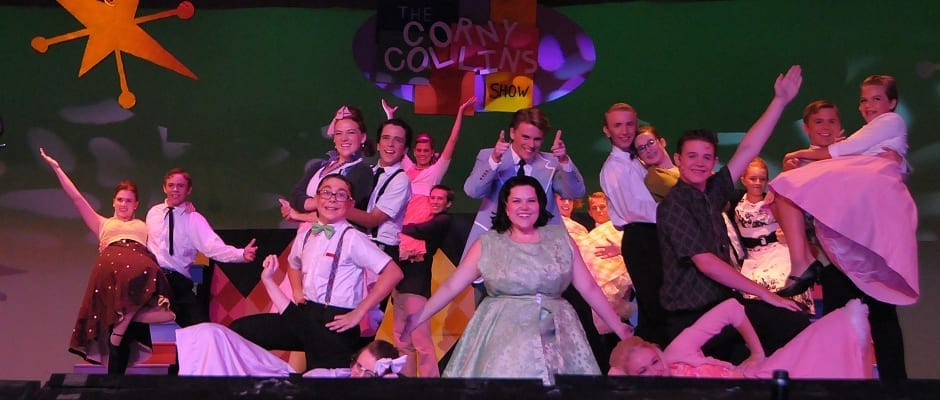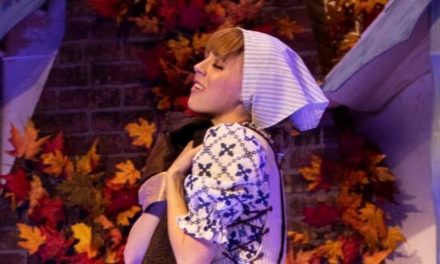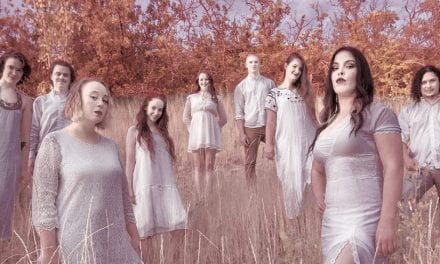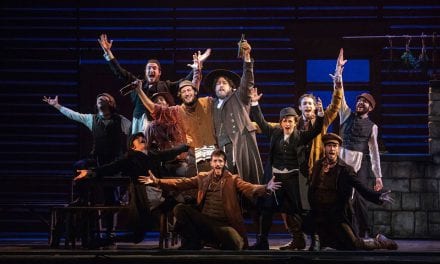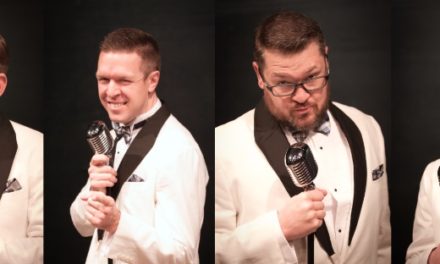SPANISH FORK — Spanish Fork Community Theater is presenting Hairspray as part of their Fiesta Days celebration. I attended last night, and will say, I was thrilled with the results.
If you’re not familiar with the storyline, Tracy Turnblad (Kat Stousenberger) is a plump girl who not only wants to fit in with her peers but wants to be famous as a singer and dancer on the local TV station’s Corny Collins Show (with Treavor Brackney playing Collins). In addition to her dance talent, Tracy wants to be on the show to get closer to its star, Link Larkin (Hayden Gillies), on whom she has a crush. The trouble with this would-be romance is that Link is already paired up, mostly on the show, with the conniving station manager Velma Van Tussle’s (Amanda Oliver) daughter Amber (Jillian Ormond). After getting on the show, Tracy causes problems as she outshines Amber, and steals Link’s heart. She also clashes with the show’s management because the Corny Collins show is segregated and Tracy wants to end the practice of “Negro Day” and integrate the show.
Learning to accept people who are different from ourselves is a huge message in this show. This is mostly explored through the issue of racial integration as the characters learn to look at the hearts of others instead of their appearance (size, race, etc.). The script of Hairspray also explores the relationship the three daughters, Tracy, Penny, and Amber, have with their mothers. Tracy’s mother Edna (Adam Keele) is obese and shy of going into the outside world until Tracy encourages her by singing a rousing “Welcome to the ’60s.” Penny struggles with her mother, Prudy Pingleton (Jennifer Mustoe), a severe, strict character who dominates her daughter by tying her to a chair for being “arrested without her (Prudy’s) permission.” Amber is pushed by her mother Velma to become Miss Teenage Hairspray 1962. All the girls display their teenage angst in “Mama, I’m a Big Girl Now”—every mother of a teenage daughter will recognize these girls’ desire to be free as their mothers want to keep them young and innocent just a little longer.
Motormouth Maybelle, played by Dana Anquoe leads the African American portion of the cast and represents the hurt and despair of the early ’60s. But not all is gloomy with Motormouth. With her wise-cracking daughter, Li’l Inez (Skyllar Moss), and her son Seaweed (DJ Luna), she rhymes and sings through the conflicts with flair and sass.
Here is why I loved the show. First, the costumes and the hair for the cast are not only authentic, but provide a palette that sets the tone for the show. I’ve never been to Baltimore, but I was alive during 1962 and I remember these styles. I am willing to believe that, on this stage, for these few short hours, I’m in Baltimore in 1962.
The music is amazing (composed by Marc Shaiman with lyrics by Shaiman and Scott Wittman). The singing, provided by a gifted leading cast and backed up by a strong, talented ensemble, flows over the audience. Kirsten Quist, the show’s music director, has pulled together harmony and depth to the show’s many delightful musical numbers. There are a few off-key notes and some of the performers are obviously not trained singers, though many clearly are. However, most numbers are upbeat, accompanied by rousing dances performed by a group of energetic, capable dancers. Choreographers Bethany Taylor and Miriam Carter are to be given credit—their instructions has gotten a bunch of 2011 kids and adults doing the Monkey, the Twist, and the Swim like they’d been doing it all their lives. Maybelle’s haunting “I Know Where I’ve Been” and Velma’s delightfully spiteful “Miss Baltimore Crabs” are a nice counterpoint to all the fun and energy the other numbers provide.
The show wasn’t without its difficulties. The tech crew had some miscues—and there was too much time in between some of the scene changes. A few of the hairdos in the number “It’s Hairspray” seemed outlandish and somewhat incomprehensible. One dancer had a large “S” made out of hair standing on the top of her head. It reminded me a little of something you’d see in a Dr. Seuss book. Another character had a huge wig with an upside down Ultra Clutch hairspray can in it. I’m not sure the necessity or significance of these. The set design for “Big Dollhouse” where all the female cast members are in jail is a little sparse. Though there are jail bars, they don’t extend to the ends of the stage, and when Tracy is in solitary confinement, the door to the cell has so few bars that she could just walk right though them without opening the door. These make the next scene where she and Link are trying to kiss a little silly, since they could just give each other a big smack through that wide gap.
That being said, I would highly recommend this show. There are a few PG-rated lines (which the innocent won’t understand anyway), but kids will love this show as much as the adults who accompany them will. It is the whole package: deep, important messages with lots of fun. The staff and cast of Spanish Fork Community Theater have created a delightful extravaganza that had many play goers dancing in the aisles for the last number, “You Can’t Stop the Beat.”

